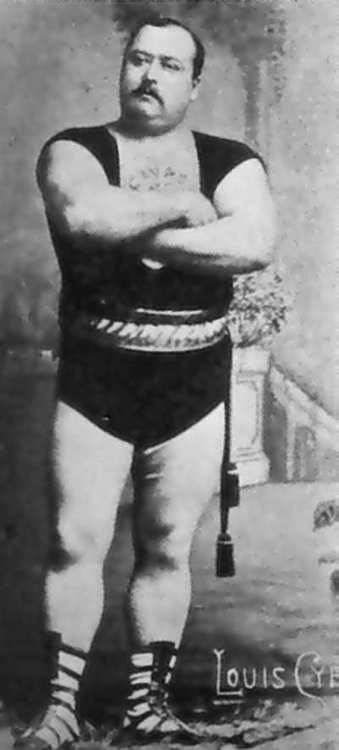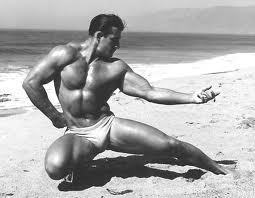The Transition to Bodybuilding. By the 1920s and 1930s, it had become evident that health and the development of the physique were closely connected, and that weight training was the best way to produce the greatest degree of muscular development in the shortest possible time. Despite his advertisements even Charles Atlas used weights rather than the dynamic tension of isometrics to produce his outstanding body. Training knowledge was limited, but bodybuilders of that day were learning a great deal simply by comparing their physiques with those of the stars of the previous generation.
For example, one of the most famous turn-of-the-century strongmen was Louis Cyr, 300 massive pounds, thick, chobby, huge around the middle and every inch the barrel-shaped strongman. But by the twenties there appeared men like Sigmund Klein, who exhibited a physique with beautiful muscular shape, balance, and proportion, as well as low body fat and extreme definition. Klein became very influential as a gym owner and writer on training and nutrition. His physique, compared to Cyr’s, was as day to night. Klein, along with Sandow and influential physical culturists like Macfadden, gradually began to convince people that the look of a man’s physique-not just his ability to perform feats of strength-was worthy of attention because the kind of training that produced the aesthetically muscular body also contributed to overall health. But the era in which the male physique would be judged purely on an aesthetic basis was still a few years away.

Strength developed by weight training was still somewhat suspect in the 1930s, as if weightlifters were not truly worthy to be called athletes. It was almost considered cheating to build up your body by training in a gym instead of participating in a variety of sports. In his earliest writing, the late John Grimek, an Olympic weightlifter who served as the model for so many aspiring bodybuilders, volunteered the information that his magnificent muscles were created by weightJifting, although you’d think that anyone seeing that physique on a beach would have realized that no amount of hand-balancing or water polo could have led to such development.
However, the tradition of physique competition continued, and by the late thirties occasional shows brought together boxers, gymnasts, swimmers, weightlifters, and other athletes. These contestants had to perform some sort of athletic feat as well as display their physiques, so it was common for weightlifters of the day to be able to do hand-balancing and other gymnastic moves.

In 1939 things started to change. The Amateur Athletic Union (AAU) stepped in and created a Mr. America contest of its own in Chicago in July.The winner was Roland Essmaker. The participants were still not full fledged bodybuilders, but came from all sorts of athletic backgrounds and posed in everything from boxer shorts to jock straps.
But as more and more emphasis was put on how the physique looked, the weightlifters began to enjoy a distinct advantage. Weightlifting changed the contours of the body more than any other kind of training, so they were able to make a very strong and increasingly favorable impression on the judges.
